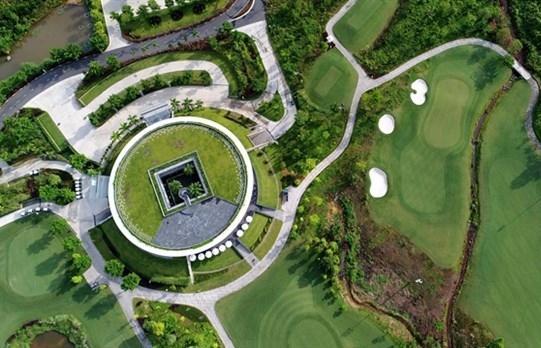Time to rethink earthquake management for high buildings in Cambodia
Time to rethink earthquake management for high buildings in Cambodia
If asked if high-rise buildings in the Kingdom should incorporate earthquake-proof systems, perhaps no one would say yes, but it could be be timely now for skyscraper developers to consider putting forth natural disaster safety measures in their projects.
While Cambodia is not earthquake-prone thanks to its distance from the edges of volatile tectonic plates, last week’s 6.8-magnitude earthquake in central Myanmar was so powerful that tremors could be felt from as far away as Bangkok, raising questions about whether existing and upcoming skyscraper developments in Cambodia could mitigate such a natural disaster if an earthquake were to occur.
Touch Samnang, deputy director of Overseas Cambodian Investment Corporation (OCIC), one the largest local construction and real estate developers, said most developers included an earthquake safety system, but the system level varied.
For instance, at the Olympia City project site, the earthquake proof system is geared towards withstanding a 6 to 7-Richter scaled earthquake, while a small number of apartment buildings only measure up to a system of 4 on the Richter scale.
He added, “All high buildings have a safety system from 5 to 6 on the Richter scale, which is enough for the majority of earthquakes, even if our country is on flatland and has never experienced an earthquake.”
Tous Saphoeun, deputy secretary-general of Pannasastra University’s architecture faculty, who has worked closely with the Thai Boon Roong Twin Trade Center Project – scheduled to begin at the end of this year – said the skyscraper development has placed emphasis on preventing earthquakes measuring up to 9 on the Richter scale partly due to the impact of climate change over the last decade.
“In building this 500-metre building, not only do we consider the aesthetic, quality, and architectural aspects, but the company also pays attention to protecting against earthquakes, storms, and other natural disasters.”
Meanwhile, Lao Tip Seiha, undersecretary of state at the Ministry of Land Management, Urban Planning, and Construction (MLMUPC), said the ministry had pressed to construction developers the need to prioritise safety systems, including protection against earthquakes, storms, and floods.
According to Seiha, the ministry was drafting a law to manage construction quality.
“Although we have never experienced any earthquake, we try to draft our laws so that high-rise building owners will have to be concerned about avoiding various natural disasters,” he said.
Michael Nhim, head of the investment team at SIDO Group, said he contemplated installing an earthquake proof system from Japan when he was working on a 17-storey hotel in Phnom Penh recently.
“I ask for all the high building developers to start thinking about this problem because of climate change,” Nhim said.
“Sooner or later, there will be an earthquake in Cambodia.
“I have never heard the MLMUPC talk about this problem, so I ask for the ministry to think about this,” he said.
Kim Heang, president of the Cambodian Valuers and Estate Agents Association (CVEA), said earthquake-proofing Cambodia should be taken seriously.
“Between prevention and treatment, what would you choose?” he asked.














